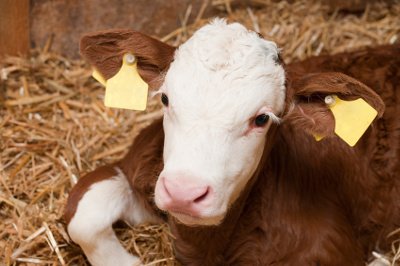16/01/2024
Ad libitum - feeding the calf
Source: Vortragszusammenfassung - DI Lisa Wiesauer, LANDWIRT Rinderfachtage 2015, 23.01.2015 Wals-Siezenheim
In recent years, an increasing number of studies have concluded that restrictive feeding of calves, i.e., giving them a bucket of milk two or three times a day (usually around 6 liters of milk per day), does not provide them with sufficient nutrients and energy. The calves are effectively malnourished. However, at the beginning of their lives, the animals' digestion is geared towards milk, and we now know that the supply of nutrients, protein, and energy is particularly important during these first weeks of life. During this time, so-called "metabolic programming" takes place, which determines the animal's subsequent metabolic activity. If the calf receives more milk during this time, this can have a positive impact on later performance – male calves, for example, achieved higher weight gains and improved fattening and slaughter performance later in the fattening process. The milk yield of female calves can also be positively influenced.

The problem, however, is that larger amounts of milk with restrictive feeding often lead to diarrhea – the calves are hungrier and often wait longer for the next bucket of milk. When they finally get it, they drink the milk very quickly, which can lead to digestive problems. Furthermore, with restrictive feeding, the temperature of the milk must always be carefully monitored, and the workload is increased. With ad libitum feeding, a bucket of acidified whole milk is hung in the calves' pens throughout the three-week feeding period. They can drink between 8 and 11 liters throughout the day, depending on their age and appetite (maximums of up to 18 liters are also possible). As long as the animals drink the milk slowly, this is not a problem.
The milk must be acidified to prevent bacterial or germ growth (e.g., E. coli bacteria). This means the temperature of the milk is secondary and doesn't need to be taken into account. Cooler milk is also consumed more slowly, which is another advantage.
Here are some tips for implementation:
- If you are already feeding your calves restrictively, do not switch them to ad libitum feeding – this could lead to digestive problems. Only switch to ad libitum feeding at the next calving!
- After the normal (unsoured!!) feeding of colostrum, a bucket of soured milk is hung in the calves’ box from the second feeding onwards.
- 3 liters of colostrum in the first 3 hours are essential – if the animal wants more, that is also okay
- Acidification of the milk with commercially available preparations (usually formic acid or acid mixtures); pH should not fall below 5.5, as otherwise the animals' acceptance will decrease; the acid does not negatively affect the digestive system
- Do not use formic acid from beekeeping (technical acid); acid must be approved for feeding
- Pre-diluting acids before use is recommended – please always wear protective clothing and carefully follow the manufacturer's instructions (mixing, concentration, documentation requirements!!...)! An important rule of thumb when pre-diluting is: "First the water, then the acid, otherwise something terrible will happen!" (Clearly label pre-mixed acids!)
- Whole milk is mixed with the acid mixture in a bucket (first acid, then the milk) and hung in the box for the animals (temperature unimportant)
- Always use the same bucket for the same calf; a lid is recommended to protect against flies!
- Use nipples that are difficult to suckle! Rubber is always a bit harder for calves than latex. Do not enlarge the nipple hole – calves should work for their milk!
- There should always be a small amount of milk left in the bucket when refilling; this means that the calf has been adequately fed and will not drink too quickly even when the new, full bucket is hung up; the rest of the milk can be fed to older bull calves.
- This feeding method can be used just as well in winter. If your calves are kept outside, the teat might freeze. In very cold temperatures, fill the buckets with warm milk three times a day – especially on cold days, don't reduce the milk supply! This is exactly when the calves need energy!
- After the three-week milking period, it's important to reduce the milk supply slowly and steadily to allow the calves to adjust gently! Two limited milk feedings per day!
- Always offer water from birth! A little concentrated feed and hay can be offered to calves in the second week of life.
And here again the most important advantages and disadvantages summarized:
Advantages:
- Animals always have milk available
- Higher daily gains
- More robust, well-cared-for, vital calves
- More colostrum is used
- Less diarrhea
- Regardless of the temperature of the milk
- Reduction of pathogenic germs through acidification
Disadvantages:
- Possible growth slump when switching to rationed drinking water
- Higher milk consumption in the first 3 weeks
You can find all our products for calf rearing here: Calf rearing!
